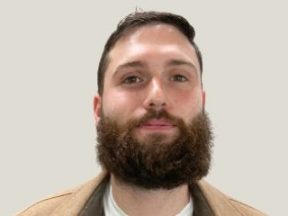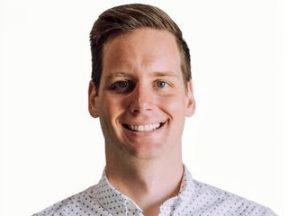Acquiring customers at a financial loss is sustainable so long as there’s cash to pay the bills. But what happens when the cash runs out? That was the dilemma facing Charles Pyles, chief operating officer of OneBlade, a premium razor company, last spring.
The business was losing money, and its sole investor couldn’t inject additional funds. Pyles’ response was forced economizing and hard decisions on staffing, shipping, and more.
He and I recently discussed OneBlade’s transition from easy money to scarcity. The entire audio of our conversation is embedded below. The transcript is edited for length and clarity.
Eric Bandholz: What do you do?
Charles Pyles: I run OneBladeShave.com. We’re a premium razor brand for guys and gals who want to avoid cartridge shaving. Our blades cost a bit less than cartridges thrown into landfills, and our razors look good on your bathroom counter.
Bandholz: Patrick Coddou with Supply, another razor provider, has been on the show five times. How does OneBlade’s strategy differ from Supply?
Pyles: Patrick is a friend. I’m not the owner of OneBlade. My role is management. OneBlade was founded in 2013, around the same time as Supply. I joined in 2020.
OneBlade’s approach has always been to create a premium, single-edge razor with a pivot. We call it “attainable luxury.” The company started with a razor that was $500, although it’s much less now.
Supply makes a great razor, but it’s for a lot more people. Our high-end razor is the Genesis. It runs $350. Our entry-level razor, the Core, costs $40. The difference is the material. The Core razor is made of hard polymer, whereas the Genesis is stainless steel.
Patrick’s razor is designed to work with any injector-style blade. Ours is a proprietary blade only. We’re counting on our customers to love their razors so much that they’ll keep coming back.
Bandholz: The two strategies are interesting. Yours appeals to enthusiasts. Supply pretty much ignores that segment.
Pyles: Yes, that’s a good point. But what we have in common with Supply is we’re both going for folks using Gillette.
Our biggest focus is converting users from Gillette, Dollar Shave, or Harry’s. Those companies collectively are the biggest target for us. I remind myself frequently not to get caught up with the cult-like enthusiast community that complains about how our razor works.
Bandholz: There are always trade-offs with a product. It’s our job as brand managers to explain decisions and why they work for certain users.
Pyles: I agree. We offer a 60-day guarantee, but our return rate is less than 4%. That metric is the true north for us.
Plus, we’re looking forward to breaking into the women’s market in 2023. We have a hunch that the Feather blade in our OneBlade razors will appeal to women.
Bandholz: Talk about the evolution of OneBlade.
Pyles: Our founder was a successful financial publisher. He had this amazing shave in an Italian barber shop and decided to develop a razor to provide the same quality at home. He put a lot of his own money into launching OneBlade. Again, that was in 2013. He hired a product developer to be the CEO. He also hired a design firm.
The CEO ended up going on Shark Tank. The exposure helped launch the company. So we started big. That may have contributed to aiming too high as a premium brand and not as accessible to more users. We’re now relearning our way. We’re focused on profitability and not so much on growth.
Bandholz: That seems to be a frequent transition. I’ve known a few people who start businesses with big ambitions. They want to take over the world and reach $100 million in three years.
Pyles: It sounds familiar. For us, the transition was clear. Our founder, the main shareholder, told us last spring he couldn’t inject additional money into the company because of what’s happening in the market. He’s got other businesses.
So we had no alternative. We had layoffs and many painful decisions. We focused on being financially healthy. We knew we could not expect different results from the same thing again and again. Our acquisition costs were too high. We had to change or go for another round of capital, which is not an option now.
We have a loyal customer base, fortunately. We turned our attention to recurring subscription revenue and fixing our margins. When you have a growth mentality, you’re looking for new customers, not profits. It’s not a scarcity mindset. Suddenly we didn’t have cash and had to make it work.
We’re implementing changes. For example, our most commonly-shipped SKU is a pack of 30 blades to refill customers. We let those customers choose 30 blades every two, three, or six months. We now ship only every six months. They can choose more blades, but we ship only every six months.
The cost of shipping 30 versus 90 blades is roughly the same. That change alone greatly improved our margins.
Bandholz: How did the customers react?
Pyles: We didn’t force them to alter their subscription. Customers that already had refill plans with us were unchanged. We made the changes only for new subscriptions going forward. We also bumped up our razor prices.
What we did change across the board was eliminate free shipping for all subscriptions, regardless of the plan. We’ve since told all customers that free shipping requires a minimum spend — many have to double up on their subscription.
Bandholz: What’s your customer acquisition strategy?
Pyles: We haven’t gone back to advertising on Facebook or Instagram since iOS 14.5. We probably should for awareness. I’ve been experimenting with podcast ads and getting good results.
It’s funny — you and I are on a podcast. People that are listening to a podcast are seeking more information. They’re seeking to learn and be informed. It seems to be a good channel for us. We’ll see where it goes.
As for podcast creative, we prefer host-read ads. It costs more, but it’s more natural and authentic than a pre-packaged one-size-fits-all spot.
Bandholz: How are you tracking attribution?
Pyles: We use a post-purchase survey and then apply a multiplier based on total cart checkouts for the month, total spend, and how many people say they found us from a podcast. Again, we’re seeing pretty good results.
Bandholz: Where can people connect with you, buy your products?
Pyles: Our site is OneBladeShave.com. I’m on Twitter and LinkedIn.




